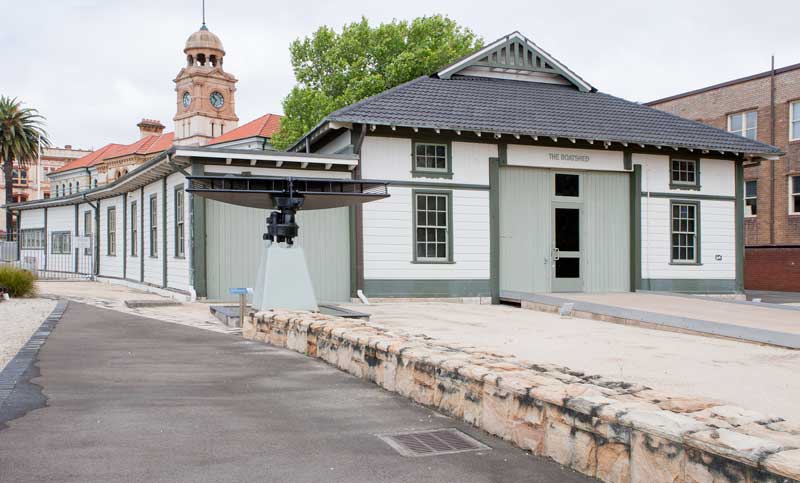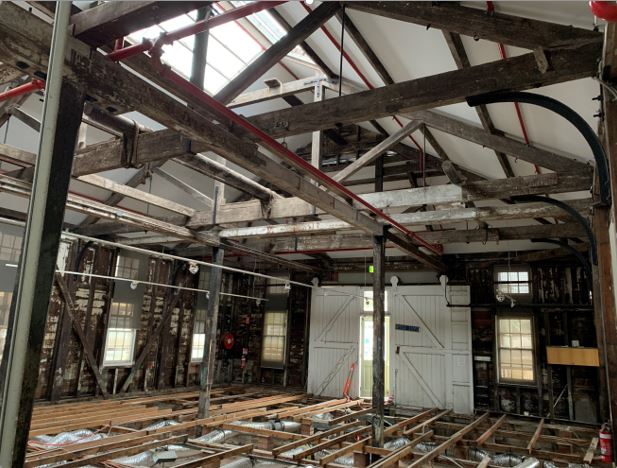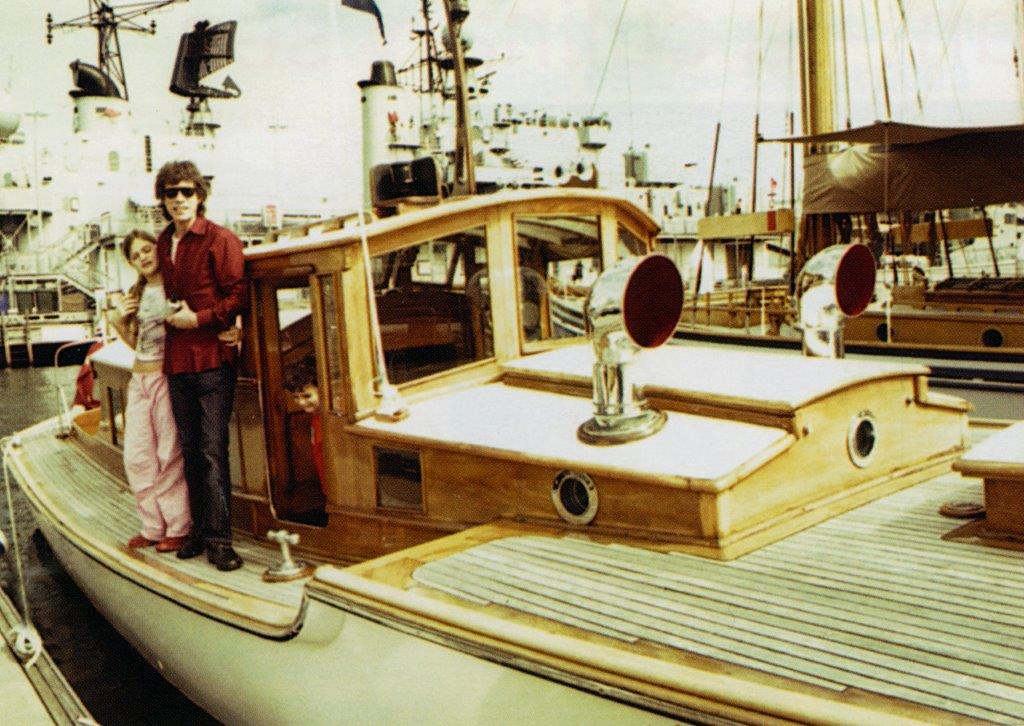- Author
- Editorial Staff
- Subjects
- History - general, Naval Historical Review editions
- Tags
-
- RAN Ships
- None noted.
- Publication
- June 2022 edition of the Naval Historical Review (all rights reserved)
This story may serve as a small tribute to Robin Stone who for many years was an invaluable volunteer at the Boatshed. In fact, she ran the place, being responsible for the administration, involving a myriad of small functions which collectively became a huge responsibility. No one appreciated just how much until Robin retired at the end of last year. Robin was the smiling face that greeted visitors whether in person or on the phone, she seemed to know everyone, and most importantly who to contact or where to find that vital piece of missing information. Not surprisingly most of the information for this story is provided from Robin’s filing system and prodigious memory. Robin and her sailor husband Ray have now dropped anchor in Manly.
Marching Orders
In March 2022, during one of the wettest seasons on record, the Naval Historical Society received its marching orders. Due to the ravages of time, and termites munching our old wooden building, it was deemed unsafe and we needed to immediately vacate the premises to permit urgent repairs. Not an ideal time to renovate, which entailed replacing structural timber and asbestos contaminated material, including partition walls and the entire tiled roof. Our home of more than twenty years became reminiscent of a damage control exercise with metal props holding up the ceiling joists which were in danger of collapse.
Accordingly, both watches of ancient mariners assisted by a few sprightly lads and lasses turned to and boxed up an extensive library, to off-site storage, and moved the remainder of our chattels and a vital IT system to temporary premises generously made available at the nearby Naval Heritage Centre. The only major problem encountered by the builders seemed to be matching the profile of hundred year old wooden material with modern equivalents. With repairs now well underway we are hopeful of a return to our refurbished offices later this year.
Three Boatsheds
To assist with repair work some original building blueprints were dusted off, which provide a background on which to trace the history of this unique building. The first boatshed at Garden Island was built in 1857, later known as Building 36, and it was located on the western side of the island. This lasted for about 30 years when it was replaced.

The new building of 40 feet (12.2 m) x 80 feet (24.4 m) was designed to Admiralty standards from an earlier century. All the joists were fixed with wedges to enable them to be knocked out and the assembly laid flat for storage on the deck of a ship. We believe it was brought out in kit form from England and much of the timber was Baltic pine, supporting a galvanised iron roof. The roof trusses were provided with wrought iron angle supports. The building was erected on the eastern side of the island near Office Square and commissioned in 1889 at a cost of £539/3/0.
Unfortunately, this new prefabricated boathouse was not built to last as in 1896 a Public Works Department report stated that the building was not worth repairing and should be replaced. Tenders for a replacement were advertised on 5 May 1896 and a contract awarded to Farley & McCarthy on 16 June, with the building completed in September 1896 at a cost of £647. This third and final boathouse, now built of local timber with a slate roof, was on a larger footprint of about 900 m2 incorporating the site of the earlier building.
Further modifications were made to the eastern side between 1914 and 1923. In 1929 a two storey building with a tiled roof was added to the northern end with a slipway underneath leading to the water’s edge, then described as ‘Building 25 comprising a Boatshed and Loft.’ This configuration existed until about 1992 when during an extensive modification to Garden Island an infilled roadway was constructed around the foreshore.
A survey conducted in May 1975 described the building as ‘Boat Repair Shed and Slipway Facility’. Dimensions were: Workshop 1267.14 m2, Offices 36.77 m2, Stores 23.35 m2 and Amenities 90.98 m2, a total of 1418.24 m2. Its foundations and floor were of concrete, with wooden frame and walls, and corrugated fibro tiled roof. The state of repair of the interior was Fair and the exterior Poor. This may have given rise to its demise as in 1980 repairs and maintenance of ship’s boats was moved to the recently acquired ex-Halvorsen boat yard on the banks of the Parramatta River at Putney.
New tenants
The building then found new tenants with the upper storey becoming a much-needed temporary Fleet Gymnasium and the ground floor mainly devoted to Fleet Intermediate Maintenance Authority (FIMA) storage. The offices were used as a meeting room by the Garden Island Combined Union Shop Committee (representing 13 unions) and the eastern extension by the popular Garden Island Social Club.
There is an interesting letter on file from Rear Admiral Nigel Berlyn, the last uniformed General Manager of the Dockyard, dated 9 April 1990, addressed to Mr Lew Lind, then Director of the Garden Island Museum. Lew became the founding father of the Naval Historical Society in 1971 and was seeking additional space for his museum established in 1986 in the kitchen adjacent to the Old Barracks Building (31). This letter also mentions the original part of the Boatshed (Building 25) being of interest to the Sydney Maritime Museum and possibly being dismantled and re-erected on Goat Island. This proposal seems to have faded away.
In the late 1980s the gymnasium, which had an unhappy accommodation history, relocated to another temporary home, leasing part of the then derelict Finger Wharf at Woolloomooloo, which was used until a purpose-built gymnasium was opened at Garden Island in October 1991.
Because of the presence of asbestos, proposals were made in 1992 for the demolition of Building 25. This was later amended in favour of removal of the asbestos products. With the old Boatshed now largely vacant, in November 2001 Lew Lind gained approval for the Naval Historical Society to move from cramped facilities in Building 31 to office and library space (94 m2) in the old Boatshed.

Over the years many obsolete but historically important items taken from ships and establishments were stored in redundant explosives storehouses on Spectacle Island. Largely because of the difficulty of boat transport these were not readily available for public display. In 2005 a Naval Heritage Centre, or small museum, was opened using the vacant Gun-Mounting Workshop (Buildings 7 & 8) on the northern point of Garden Island. An overflow from the Heritage Collection was relocated to the old Boatshed (Building 25).
Building 25 is included within the Garden Island Heritage Precinct which is entered in the Register of the National Estate and the Australian Heritage Commission under the Australian Heritage Commission Act. This means the buildinghas to be preserved and many of its original features retained. The recent restoration fills us with confidence that the old Boatshed may continue to provide many more years of useful life.
A Rolling Stone
Alfred Scutts worked at the Boatshed from 1914 until his retirement as senior foreman in 1946. During the war years up to 100 men were employed here involved in the repair of smaller vessels, ships’ boats, launches, work boats, dinghies, officers’ barges, etc.
Alfred, a well-qualified boat-builder, migrated from England with his wife Gertrude and four sons. The family lived at Marrickville where a daughter Eva was born. At the end of WWI Gertrude and the children returned to England leaving Alfred behind. Alfred was supposed to follow later but remained here (they did not divorce) until his death in 1963. In England Eve married Joe Jagger and they had a son Michael Philip Jagger. The youngster grew up to be the musician Mick Jagger and Alfred became the grandfather of the world renowned ‘Rolling Stone’.

The attached photograph taken of Alfred shortly after he had retired admirably fits a description of him as being of good bearing with a straight back, who never slouched. He was
very dapper, always in a well-cut suit, with collar and tie, flower in his lapel, polished shoes, well spoken, with a waxed moustache which twirled when he spoke. His apprentices were in awe of him.
A District Officers Boat MB172 (now known as Epic Lass) built at the Garden Island Boatshed under the supervision of Mr. Scutts was launched in 1937. She saw wartime service in the Northern Territory and New Guinea and was retired in the early 1980s. She is now amongst the vessels in the Australian National Maritime Museum’s fleet. During an Australian concert tour in 2003 Mick and his daughter Georgia visited the Australian National Maritime Museum to catch up with local members of the Scutts family and to admire his grandfather’s workmanship.





